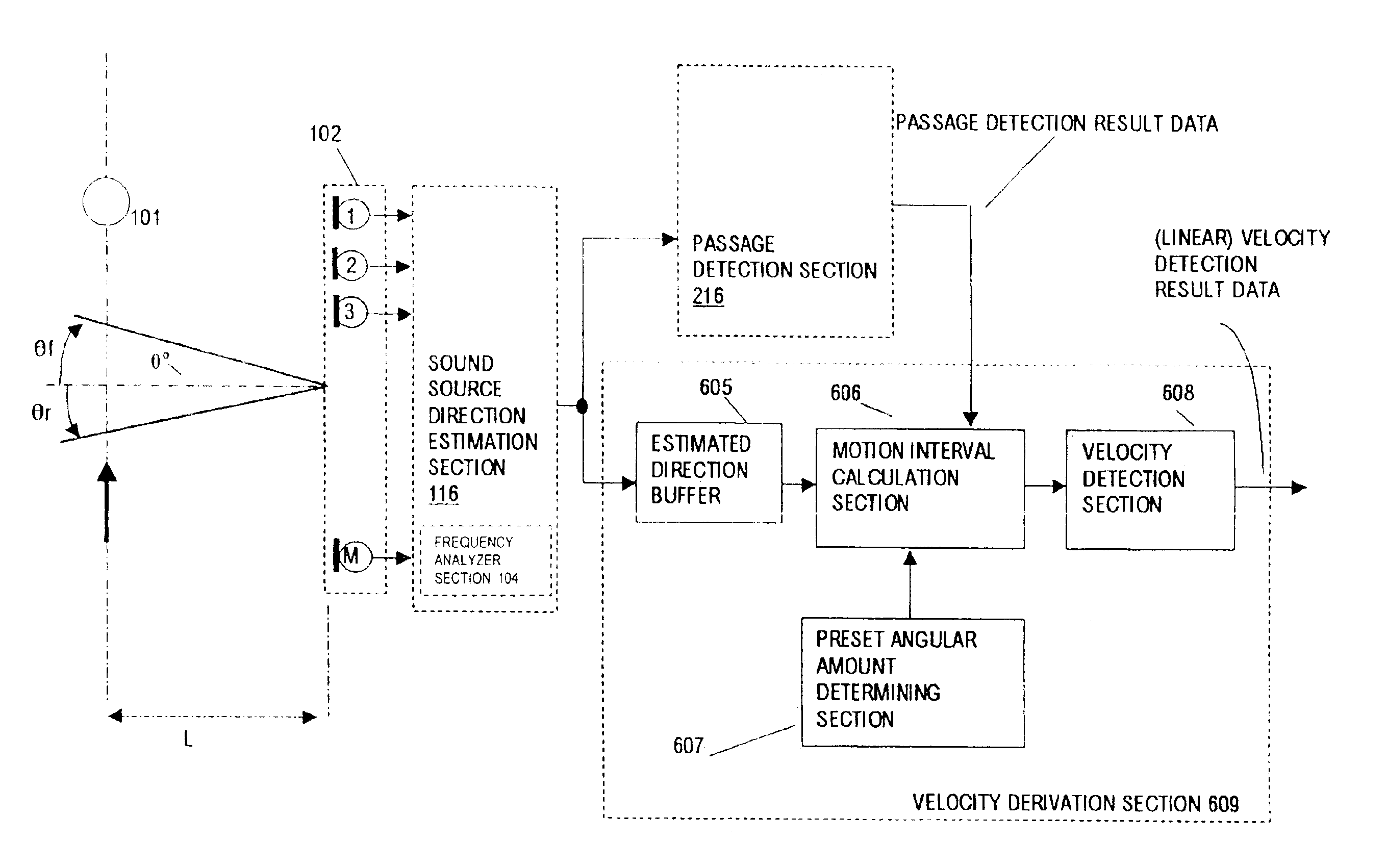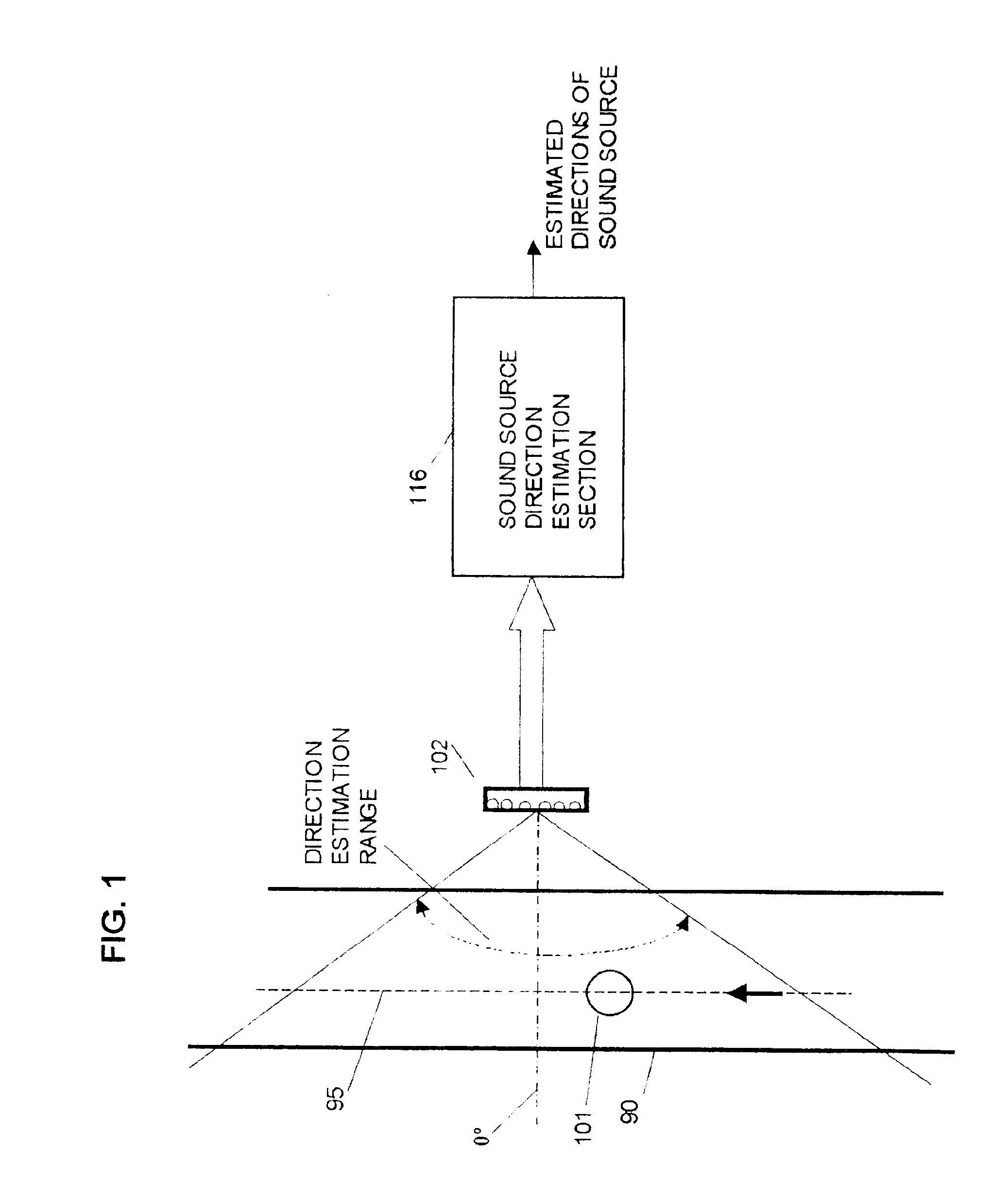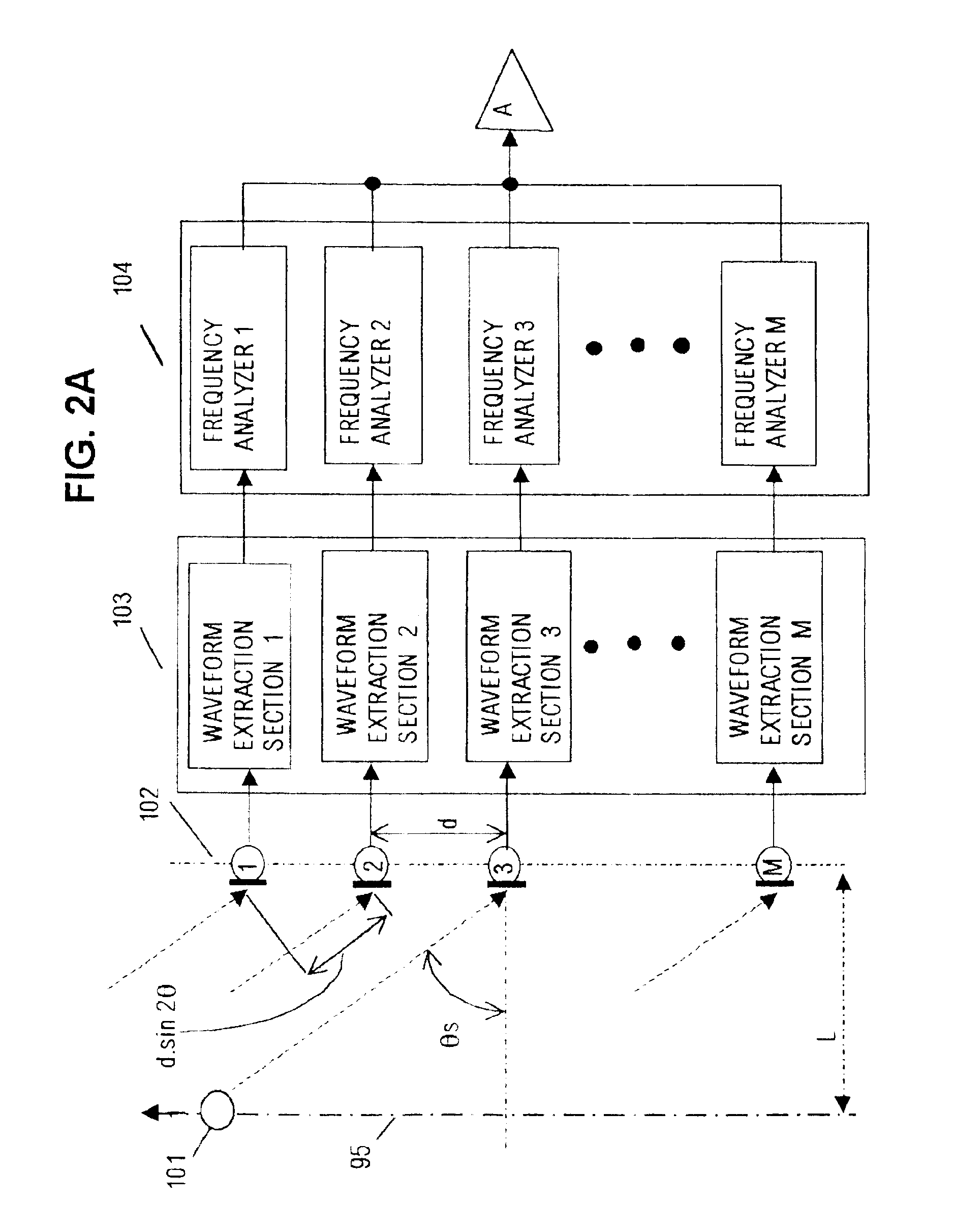Method and apparatus for concurrently estimating respective directions of a plurality of sound sources and for monitoring individual sound levels of respective moving sound sources
a technology of plurality of sound sources and simultaneous estimation, applied in direction/deviation determination systems, instruments, reradiation, etc., can solve the problem of low accuracy of estimating the direction of sound sources, and achieve the effect of accurate estimation
- Summary
- Abstract
- Description
- Claims
- Application Information
AI Technical Summary
Benefits of technology
Problems solved by technology
Method used
Image
Examples
first embodiment
The basic features of a first embodiment of the invention will first be described referring to the conceptual diagram of FIG. 1. In FIG. 1, numeral 101 denotes a sound source such as a motor vehicle (as seen in plan view) travelling along a path 95 in the direction indicated by the arrow, for example along a road 90. A linear array of a plurality of microphones 102 is disposed adjacent to the path 95 with the array direction parallel to the path. Respective output signals from the microphones of array 102 are supplied to a sound source direction estimation section 116, in which the signals are processed to detect successive directions (expressed with respect to a specific point as origin, such as the location of a central microphone of the microphone array 102) of each of one or more sound sources such as the sound source 101 which are moving in the arrow direction along the path 95 within the indicated direction estimation range.
Each direction of a sound source will be assumed to b...
second embodiment
A second embodiment of the invention will be described referring first to the general system block diagram of FIG. 6. In FIG. 6, a microphone array 102 and a sound source direction estimation section 116 have the respective functions and configurations described hereinabove for the correspondingly numbered components of the first embodiment. The sound source direction estimation section 116 can have the first configuration shown in FIGS. 2A, 2B, whereby each output estimated direction is derived based upon frequency-based averaging and upon time-based averaging applied over a plurality of successive time windows, or can have the alternative configuration shown in FIG. 4, with only frequency-based averaging being applied. Data expressing respective estimated directions of a sound source are supplied from the sound source direction estimation section 116 to an in-range occurrence number calculation section 212 of a passage detection section 216, which also consists of a direction rang...
third embodiment
A third embodiment will be described referring to the general system block diagram of FIG. 8. As shown, this is formed of a microphone array 102, sound source direction estimation section 116 and passage detection section 216, together with a data buffer 307, a data extraction section 308 and a recording apparatus 309. The sound source direction estimation section 116 can have the first configuration shown in FIGS. 2A, 2B, whereby each output estimated direction is derived based upon frequency-based averaging and upon time-based averaging applied over a plurality of successive time windows, or can have the alternative configuration shown in FIG. 4, with only frequency-based averaging being applied. The passage detection section 216 has the configuration and operation described above for the preceding embodiment.
The operation of this embodiment is as follows. Data expressing respective passage detection results are supplied from the passage detection section 216 to the data extractio...
PUM
 Login to View More
Login to View More Abstract
Description
Claims
Application Information
 Login to View More
Login to View More - R&D
- Intellectual Property
- Life Sciences
- Materials
- Tech Scout
- Unparalleled Data Quality
- Higher Quality Content
- 60% Fewer Hallucinations
Browse by: Latest US Patents, China's latest patents, Technical Efficacy Thesaurus, Application Domain, Technology Topic, Popular Technical Reports.
© 2025 PatSnap. All rights reserved.Legal|Privacy policy|Modern Slavery Act Transparency Statement|Sitemap|About US| Contact US: help@patsnap.com



